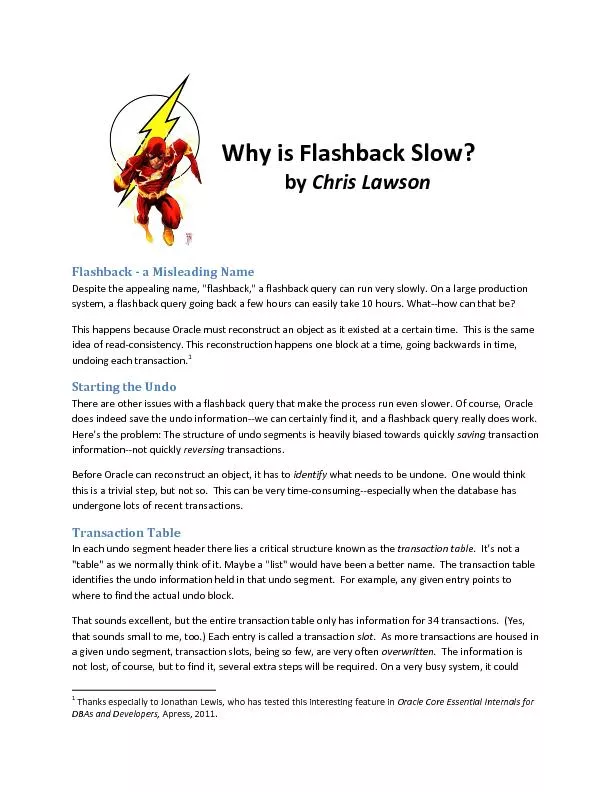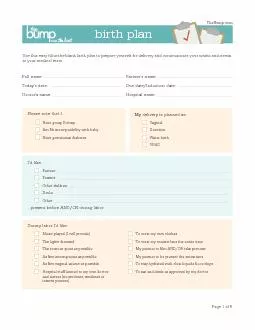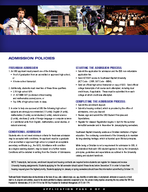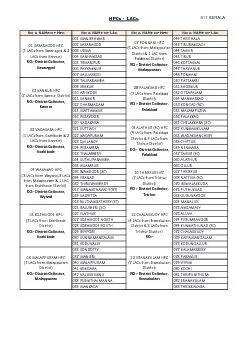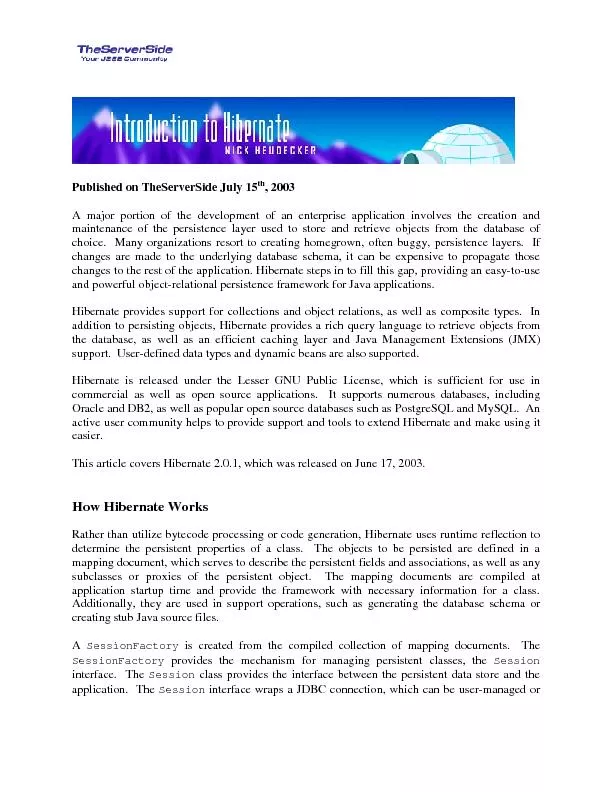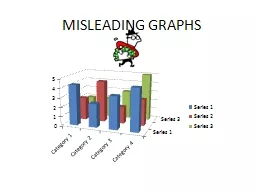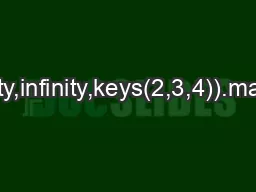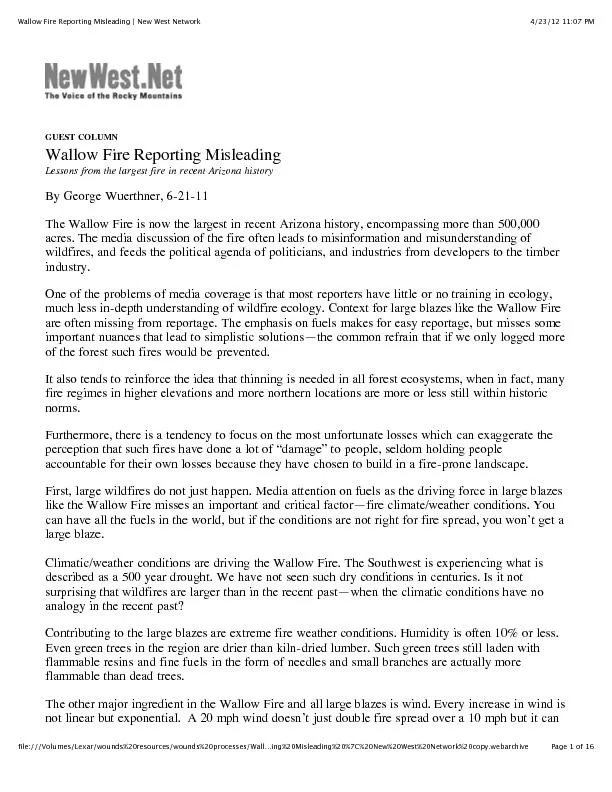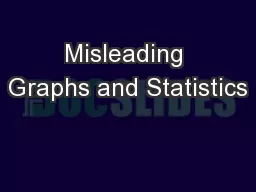PDF-a Misleading Name
Author : tatyana-admore | Published Date : 2016-04-16
Flashback Despite the appealing name flashback a flash back query can run very slowly On a large production system a flashback query going back a few hours can
Presentation Embed Code
Download Presentation
Download Presentation The PPT/PDF document "a Misleading Name" is the property of its rightful owner. Permission is granted to download and print the materials on this website for personal, non-commercial use only, and to display it on your personal computer provided you do not modify the materials and that you retain all copyright notices contained in the materials. By downloading content from our website, you accept the terms of this agreement.
a Misleading Name: Transcript
Download Rules Of Document
"a Misleading Name"The content belongs to its owner. You may download and print it for personal use, without modification, and keep all copyright notices. By downloading, you agree to these terms.
Related Documents

